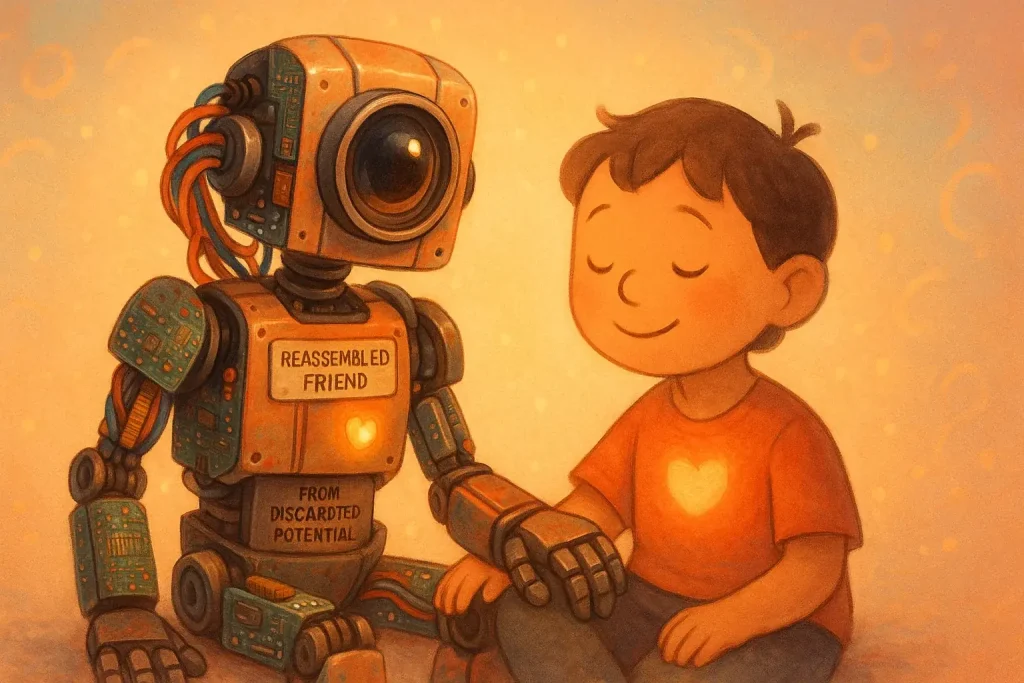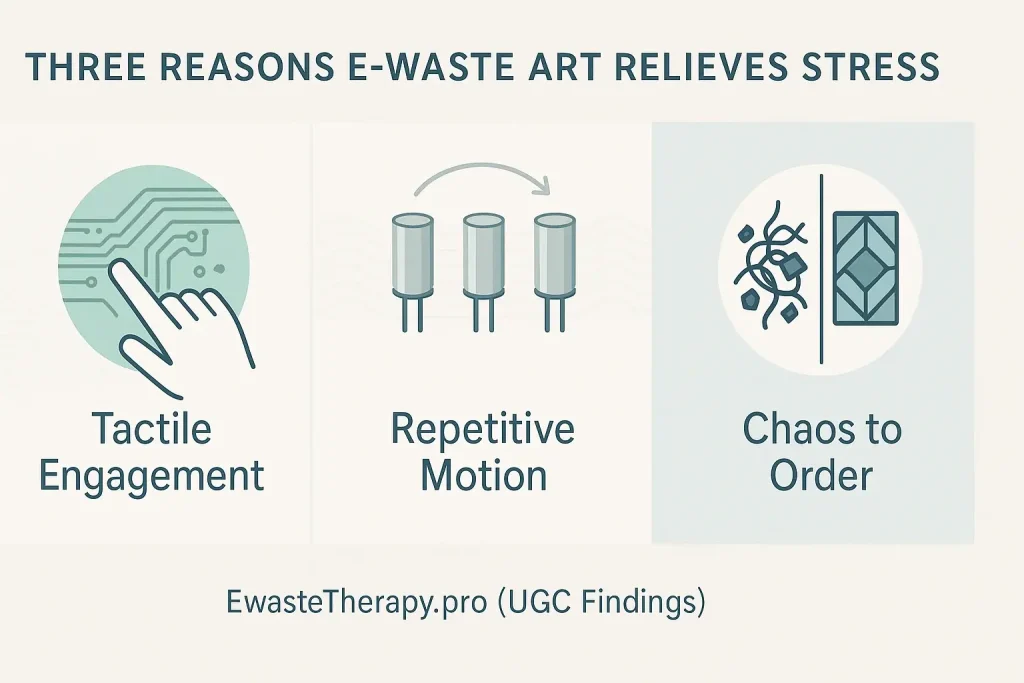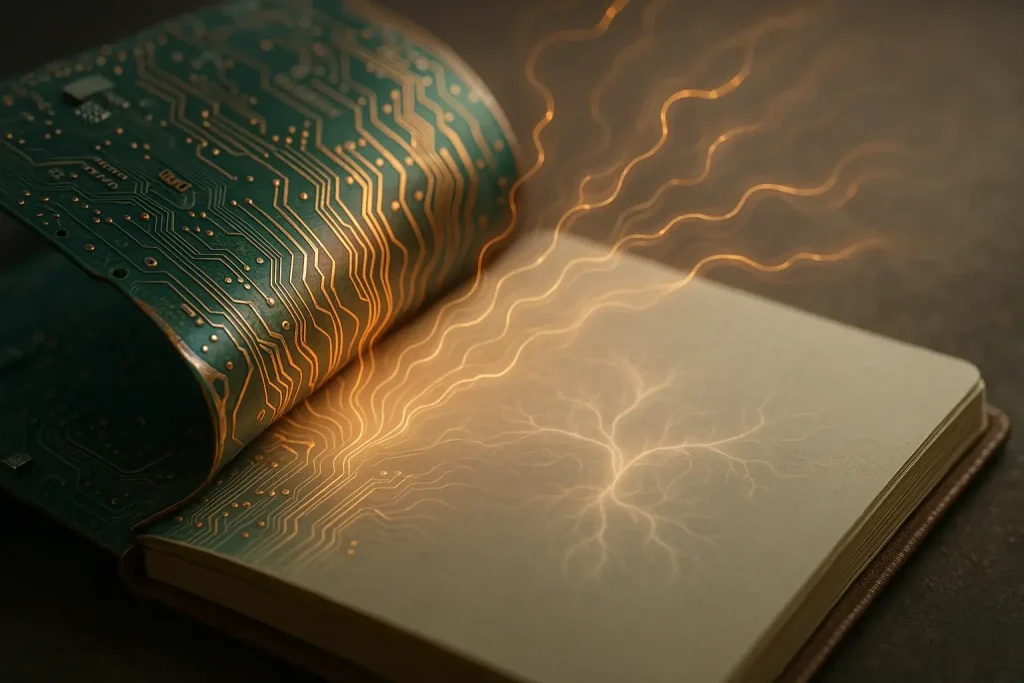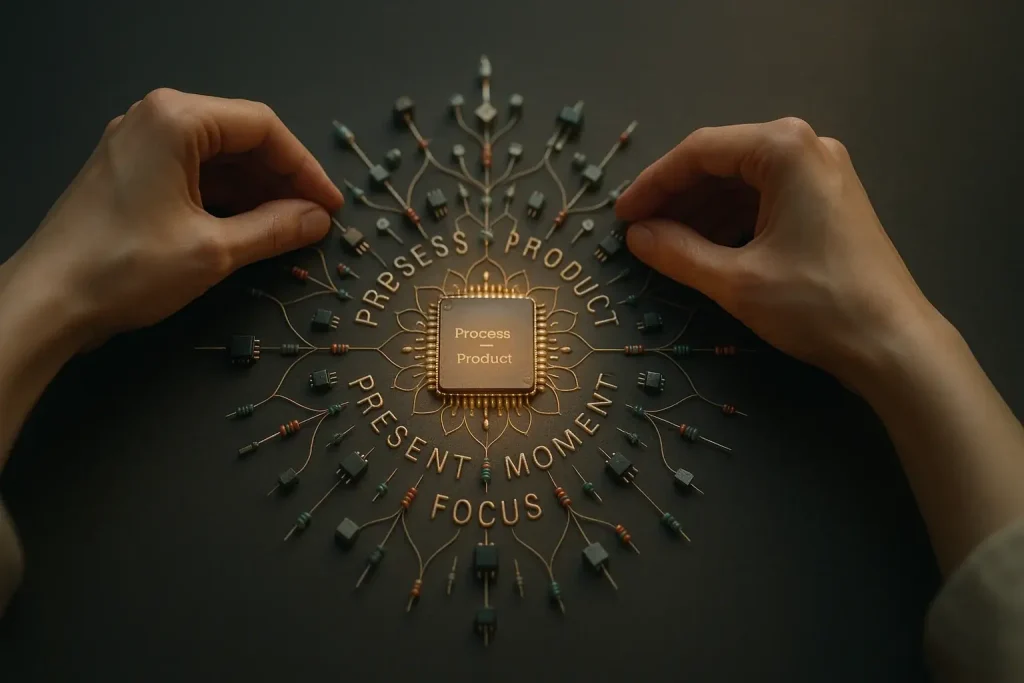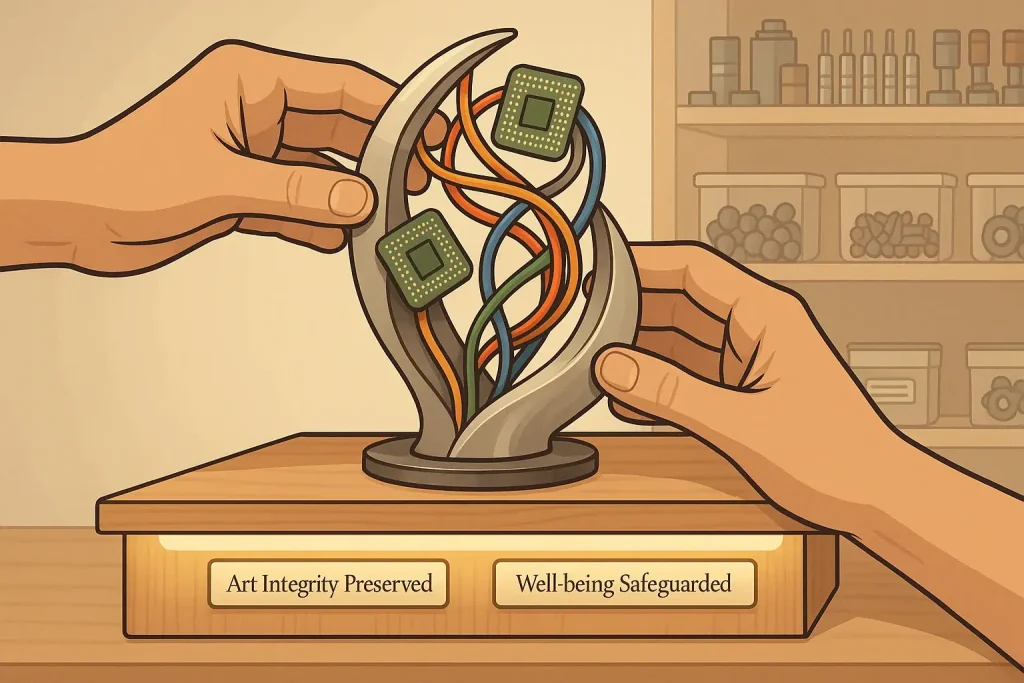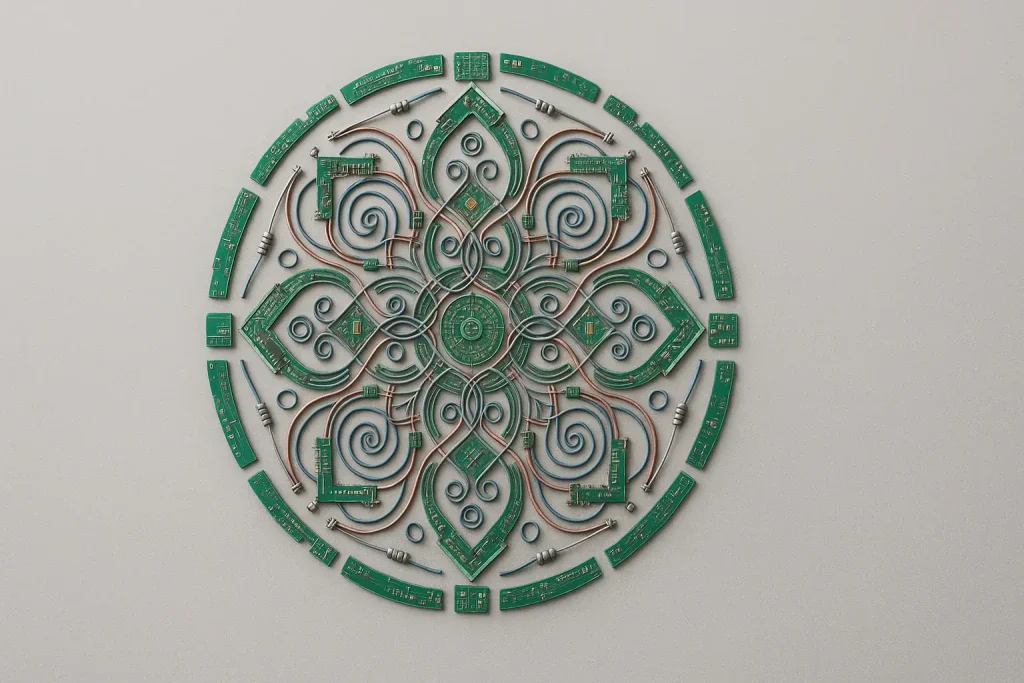Why Sharing Your E-Waste Art Needs a Safe Space
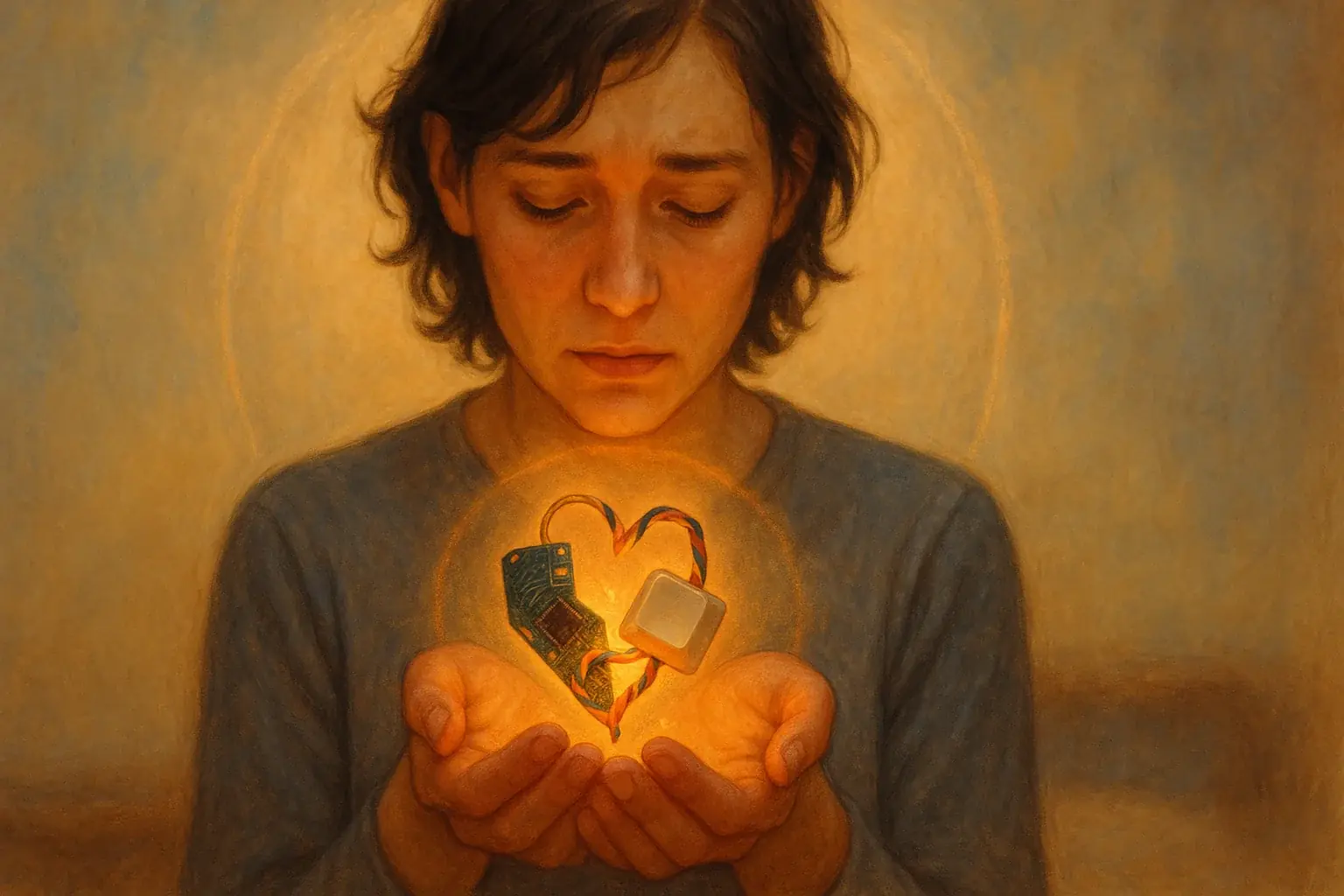
That personal e-waste artwork? It holds your story. Sharing it feels vulnerable. Right? Our user experience analysis at EwasteTherapy.pro confirms this deep feeling. Sharing your therapeutic art can be powerful. This act demands careful thought. It requires emotional safety.
E-waste art carries unique symbolic weight. Traditional forms differ. These pieces often use discarded technology. They reflect transformation. They speak of repair. They can echo personal 'brokenness'. You share a piece of your soul with such art. It is a raw, authentic narrative. This narrative deserves protection. Our user data reveals a crucial insight. Emotional safety in sharing your art is paramount. Its importance equals the physical safety of art creation. This focus protects your healing process. Not merely 'likes'.
So, how do you navigate this delicate balance? How can you find supportive spaces? Spaces where your art receives true honor? You want sharing without emotional risk. EwasteTherapy.pro helps you understand this complex issue. We offer strategies for safe expression.
Defining Your Personal Sharing Boundaries
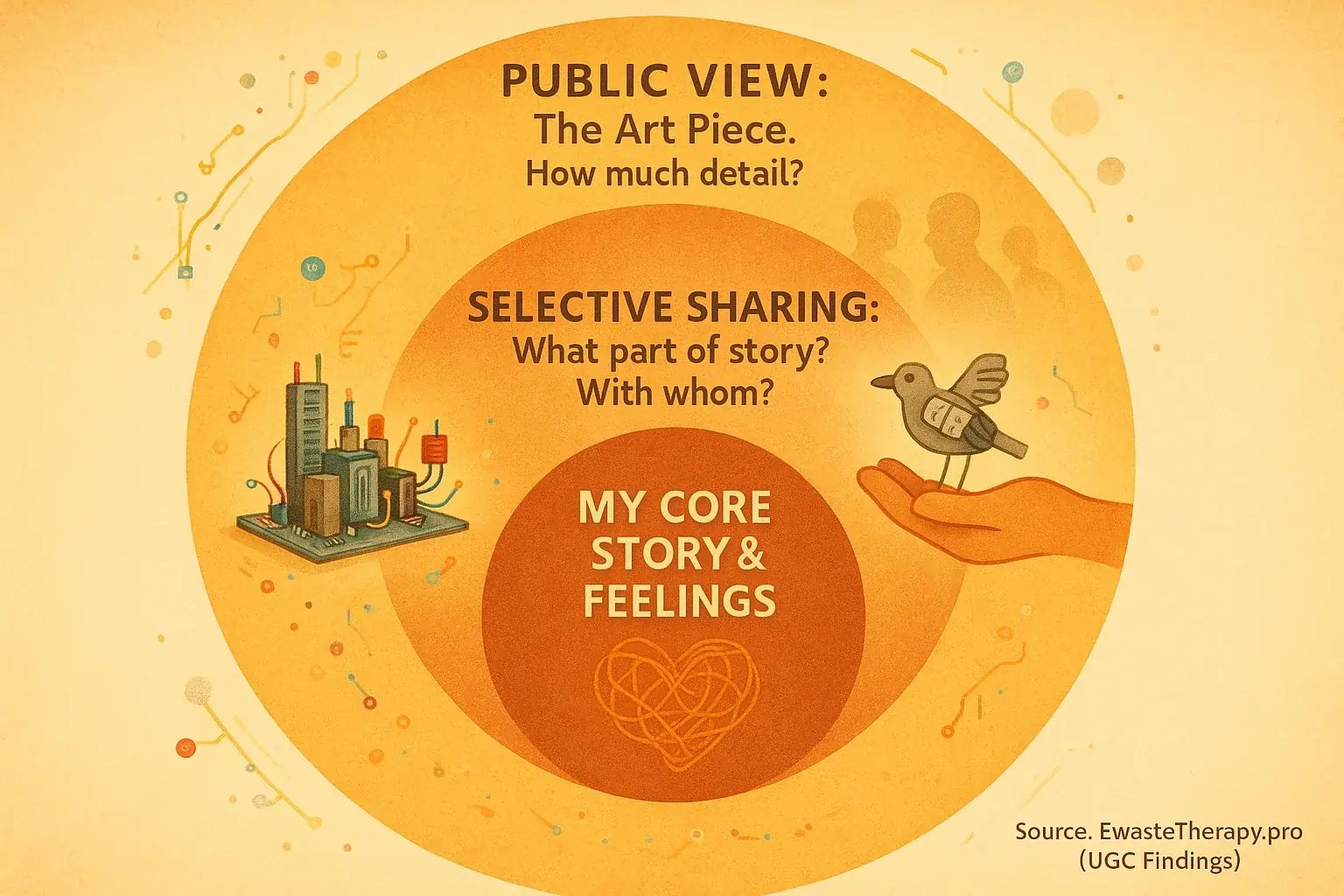
Before you share your latest piece, pause. Your first step in safe sharing involves defining personal boundaries. This action safeguards your peace. It does not limit your creativity. EwasteTherapy.pro’s analysis of user experiences shows these boundaries are deeply personal; they also evolve.
Ask yourself: What aspects of this piece are deeply personal? What story are you comfortable sharing? What feels too raw for public view? For instance, if an e-waste sculpture embodies past trauma, you might share the art. The specific narrative can remain private, a common choice for self-protection seen in user accounts.
Many users also find deciding on a 'sharing spectrum' immensely helpful. This ranges from vague descriptions to fuller disclosure. Here's a kicker from user experiences. Many discover the act of deciding what to share is itself a powerful therapeutic exercise. This choice solidifies your relationship with the art before external opinions arrive.
Remember, your boundaries are not set in stone. What feels right today might change tomorrow. That change is perfectly okay. It is your art. Your story. Your healing journey. You always control how much you reveal.
Finding Your Tribe: Who to Share Your E-Waste Art With
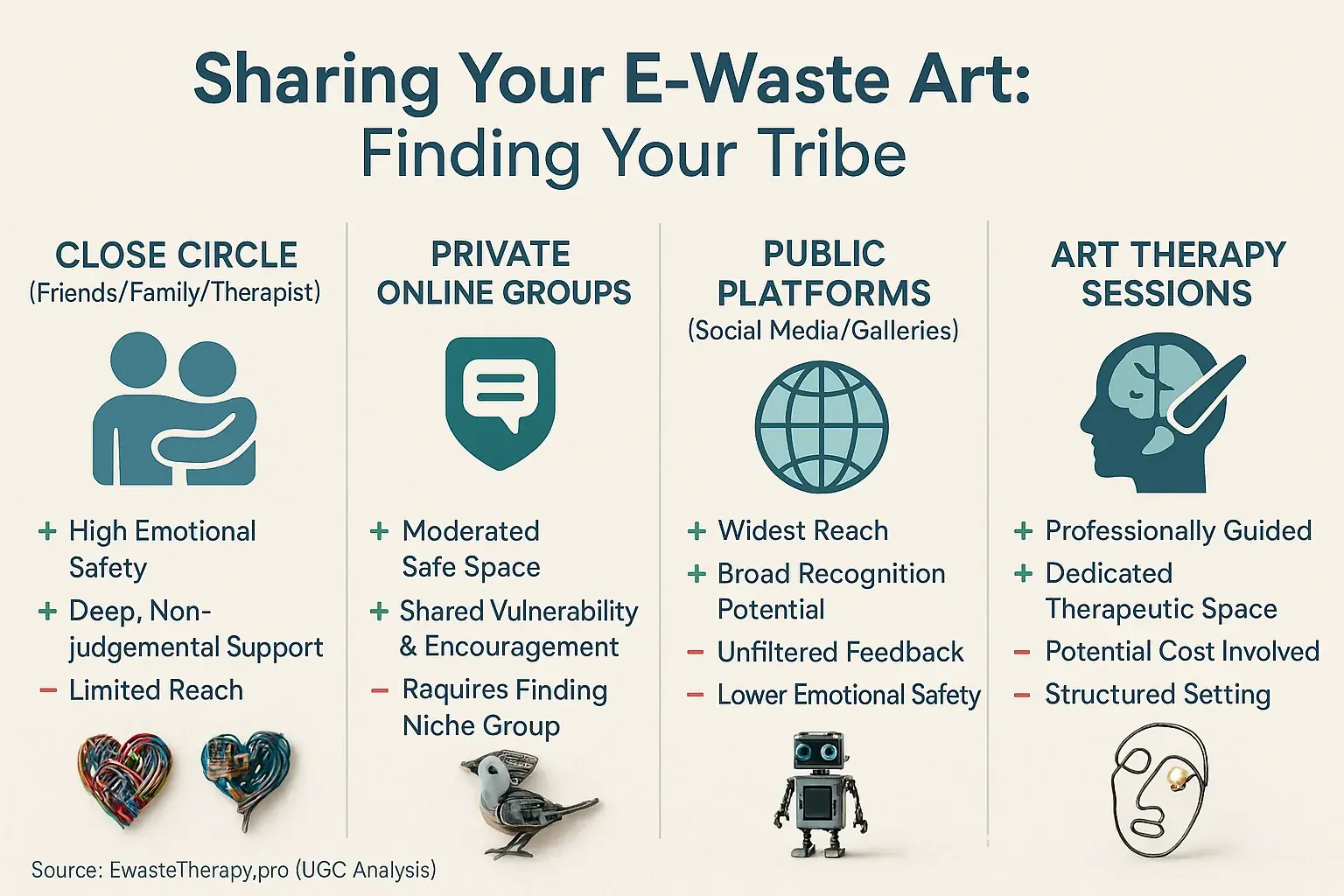
Okay, you set your boundaries. Now, where do you actually share your e-waste art? The 'who' and 'where' are vital. These choices are just as important as your creation itself. Different audiences offer varied emotional support. Platforms present unique exposure levels, significantly shaping your sharing experience.
Many find intimate sharing the safest first step. This involves a trusted friend, family member, or therapist. These are your inner circle. These individuals already understand and support your journey. They offer a safe, non-judgmental space to test sharing waters. Here's a kicker. Some users report sharing with just one or two trusted individuals provides more profound therapeutic benefit than broadcasting to hundreds. It is about depth. Not reach.
Beyond your inner circle, consider private online communities. Many such groups dedicate themselves to art therapy or upcycling. Some even focus on specific e-waste art. User experiences show these communities frequently have moderators. A shared understanding of vulnerability often exists there. They can offer incredible encouragement, free from public scrutiny pressures.
Public platforms like Instagram offer wider reach. Art galleries do too. But these platforms also bring unfiltered feedback; many user accounts confirm this pattern. If you choose this route, ensure your boundaries are rock-solid. You must prepare for diverse reactions.
The Art of Anonymity: Protecting Your Identity When Sharing

Sharing your art can feel right. Revealing your true identity might not. That's where the 'art of anonymity' enters. It is a powerful self-protection tool. This becomes vital when your e-waste art explores deeply personal themes. Our user data confirms anonymity empowers sharing. Judgment fears lessen significantly.
First, consider using a pseudonym. Or create an entirely anonymous online profile. This profile must not link back to your real name. It should avoid your personal email. It must shun other personal accounts. Second, be incredibly mindful of your photos. A quick snapshot of your e-waste sculpture might accidentally reveal your home. Your face could appear. Other identifying details might lurk in the background. Crop tightly. Blur backgrounds. Use a neutral backdrop. Here's a kicker: many users report that creating an anonymous persona for their art actually frees them. They express more authentically. The pressure of external expectations dissolves, allowing for purer therapeutic work.
Always double-check the privacy settings on any platform you use. Understand who can see your posts. Know who can comment. Learn precisely how your data is handled by the platform. Your digital safety is just as vital as your emotional safety. Protect both.
When Feedback Hits: Handling Reactions to Your E-Waste Art
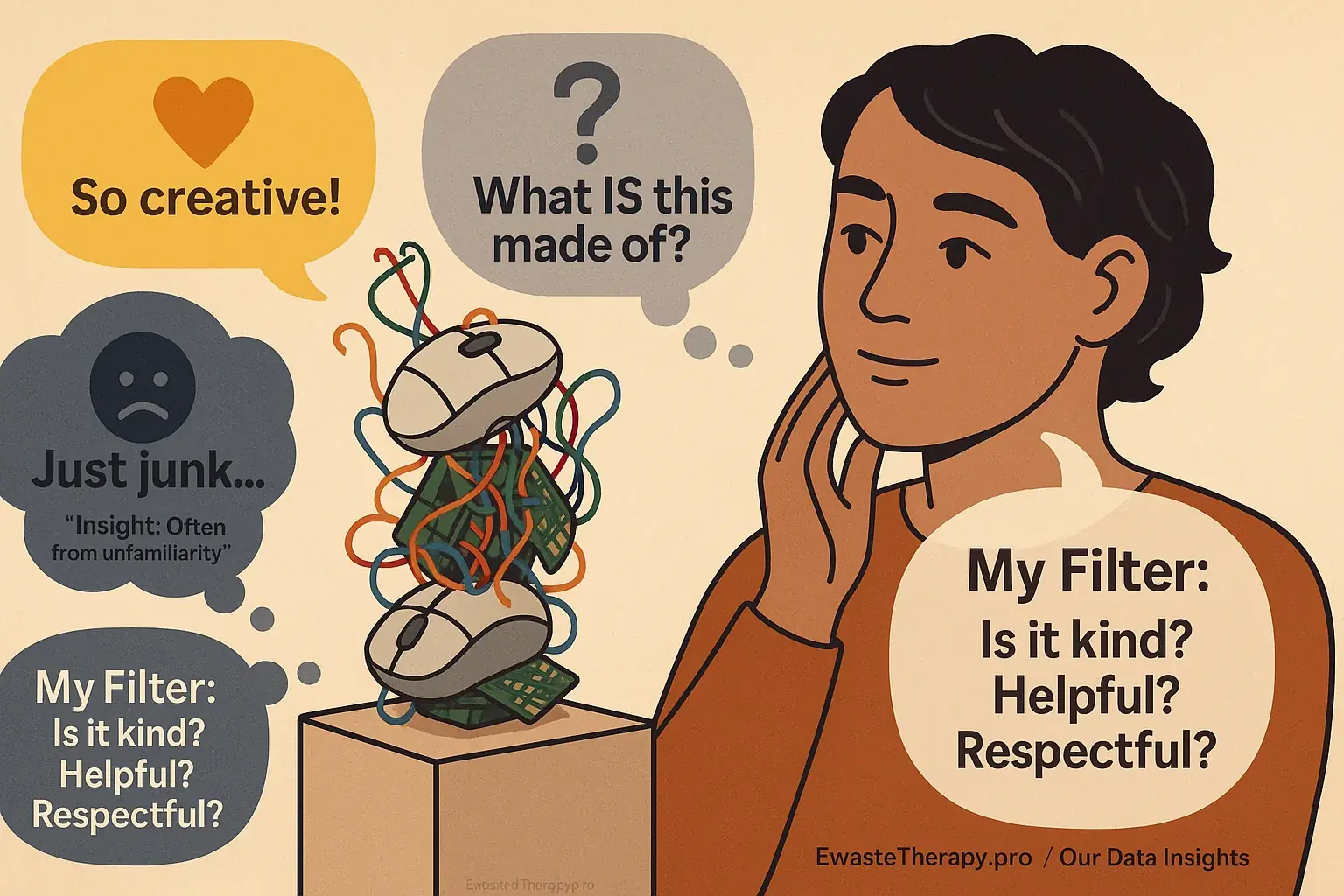
You shared your art. Feedback arrives next. Reactions can range from heartwarming praise to less helpful comments. Your handling of these responses profoundly impacts your emotional well-being. Remember: feedback often says more about the giver than your creation.
First, filter all feedback. Not all comments carry equal weight. Some offer genuine support or constructive insights. Others might reveal the viewer's personal issues or simple confusion about your unique medium. Your task involves developing a strong 'feedback filter'. Ask yourself: Is this comment kind? Is it truly helpful? Does it respect my personal boundaries? If the answer is no, release it. Many users find focusing on supportive words helps them maintain balance. Here is a key insight: our community reports the harshest reactions often arise from unfamiliarity with therapeutic e-waste art. Their discomfort does not define your art's inherent value.
Practice deep self-compassion. Your art serves your healing journey first. A stinging comment might hurt; acknowledge that feeling. Do not let external opinions derail your personal process. You owe no one a reply. Should you choose to respond, keep it brief. Center your words on your truth, not theirs.
The Healing Echo: Why Safe Sharing Amplifies Your E-Waste Art Journey
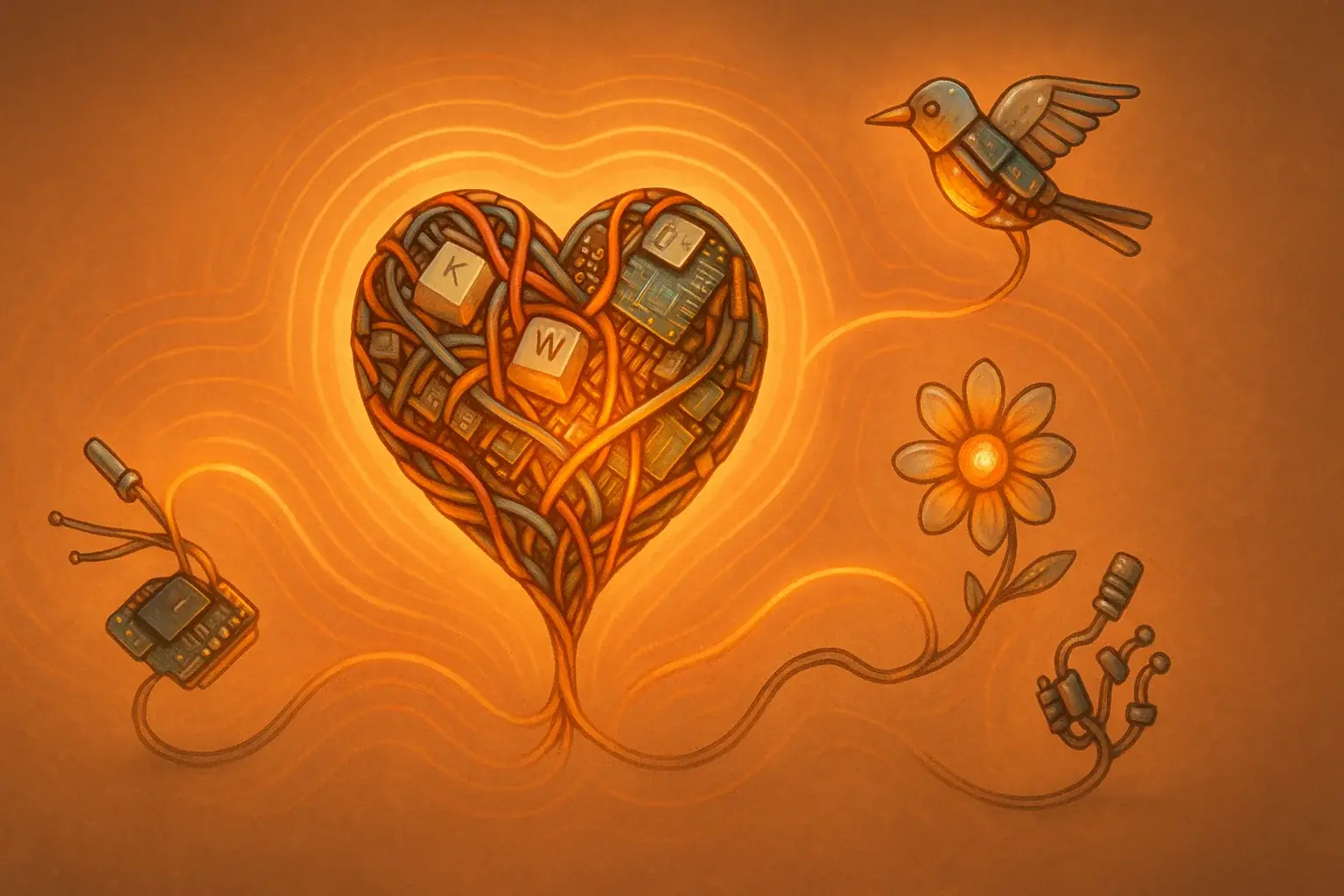
So, why share at all? Why reveal your personal e-waste art? Many creators find an answer in connection. Safe sharing, with clear boundaries and a supportive audience, amplifies your healing journey. It creates a powerful 'healing echo.' This process transforms a personal act into a shared experience of growth.
Connecting with others who understand your unique path fosters profound belonging. You might inspire someone else to start their own e-waste art journey. Their questions or reflections could offer new insights into your own work. It is a beautiful, reciprocal process. Here's a key observation many users report: sharing even one piece often solidifies their commitment to the therapeutic process. Healing becomes tangible, visible, and real.
Your e-waste art is a testament to transformation. Sharing it, when you feel ready and safe, extends that transformation beyond yourself. Seek out those supportive communities. Let your art echo healing into the world. One safe share at a time.
